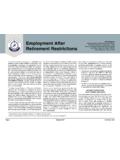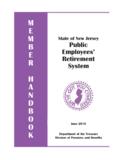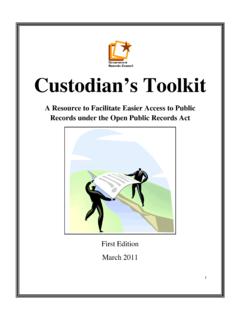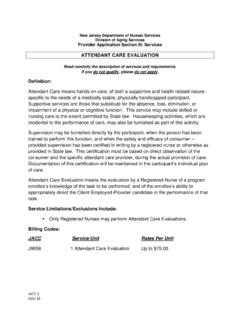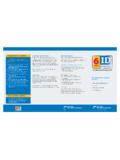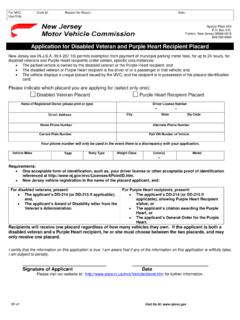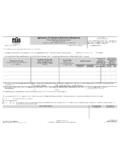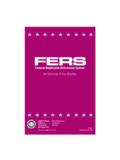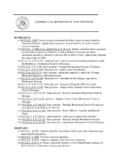Transcription of Public Employees’ Retirement System (PERS) …
1 Deferred RetirementInformation for: Public Employees Retirement System (PERS) Teachers Pension and Annuity fund (TPAF) Police and Firemen s Retirement System (PFRS) State Police Retirement System (SPRS)Page 1 February 2018 Fact Sheet #14 Deferred Retirement is available if you have at least 10 years of service credit upon terminating employ-ment, but do not yet meet the Retirement age re-quirement set forth by the State-administered retire-ment systems. You will begin receiving a Retirement allowance on the first of the month after attaining Retirement age only if a Retirement application has been filed with the New Jersey Division of Pensions & Benefits (NJDPB).You must file an online application for retire-ment via the Member Benefits Online System (MBOS). To register for MBOS, visit our website at: You can apply for a Deferred Retirement when you terminate covered employment or any time prior to attaining the Retirement age requirement.
2 Under no circumstances can a Deferred Retirement become effective prior to the date the application is received by the a member is removed from employment for cause, the member may be ineligible for Deferred AND TPAF MEMbERSPERS and TPAF members that do not file a Deferred Retirement Application before normal Retirement age will only be permitted to file for the Maximum Option from the Retirement System . The Maximum Option, also called a single-life annuity, is the highest amount payable and provides a Retirement benefit to you for the remainder of your life. Upon your death, benefits end and your survivors do not receive a pension the provisions of the Internal Revenue Code (IRC) 409(a)(9), you are required to start receiving benefits no later than April 1st of the calendar year following the calendar year in which you attain age 70 . The NJDPB will make every reasonable effort to notify you with instruction on how to either collect your Retirement benefit or return your pension contri-butions in a lump sum (see Required Minimum Dis-tribution on page 3).
3 There are different enrollment and Retirement criteria for PERS and TPAF members based on their enroll-ment dates. Theses differences, referred to as Mem-bership Tiers, are defined as follows: Membership Tier 1 Members who were en-rolled prior to July 1, 2007; Membership Tier 2 Members who were en-rolled on or after July 1, 2007, and prior to No-vember 2, 2008; Membership Tier 3 Members who were en-rolled on or after November 2, 2008, and on or before May 21, 2010; Membership Tier 4 Members who were en-rolled after May 21, 2010 and before June 28, 2011; and Membership Tier 5 Members enrolled on or after June 28, Retirement age requirement for PERS and TPAF members is age 60 for Tier 1 and Tier 2 members, age 62 for Tier 3 and Tier 4 members, and age 65 for Tier 5 members. Therefore, your Deferred Retire-ment date is the first of the month following your 60th, 62nd, or 65th birthday depending on your member-ship tier.
4 Your Retirement allowance is based on the Service Retirement formulas shown below:The formula to calculate the maximum annual pen-sion for Tier 1, Tier 2, and Tier 3 is: Years of Service X Final Annual 55 Average = Retirement Salary AllowanceThe formula to calculate the maximum annual pen-sion for Tier 4 and Tier 5 is: Years of Service X Final Annual 60 Average = Retirement Salary AllowanceYears of Service means the years and months of pension service credited to your account. Final Average Salary for Tier 1, Tier 2, and Tier 3 members means the average salary for the three years immediately preceding your Retirement (30 months for employees with 10-month contracts). If your last three years are not your highest years of salary, your allowance will be calculated using your three highest fiscal years (July 1st - June 30th) of salary.
5 Fact Sheet #14 February 2018 Page 2 Deferred RetirementThis fact sheet is a summary and not intended to provide all information. Although every attempt at accuracy is made, it cannot be Tier 4 and Tier 5 members, Final Average Sal-ary means the average salary for the five years im-mediately preceding your Retirement (50 months for employees with 10- month contracts). If your last five years are not your highest years of salary, your allow-ance will be calculated using your five highest fiscal years (July 1st - June 30th) of salary. Note: If your last years of salary are not your highest years, you must indicate your highest years on the Retirement AND SPRS MEMbERSR etirement age for members of the PFRS and SPRS is age 55. Therefore, if you terminate employment prior to your Retirement age, your Retirement allow-ance will begin the first of the month following your 55th birthday. The Retirement allowance is equal to two percent of your Final Compensation for each year of service (up to 25 years for SPRS members).
6 For example, a member who terminates employment after 11 years with a Final Compensation of $35,000 will receive 22 percent of $35,000, for an annual re-tirement allowance of $7, members enrolled on or before May 21, 2010, Final Compensation means the base salary on which pension contributions are taken for the 12 months immediately preceding your termination of employment. For members enrolled after May 21, 2010, Final Compensation means the average of the last three years base salary or highest three fiscal years base salary on which pension contributions are based. For PFRS members, Final Compensation does not include extra pay for overtime, bonuses, housing/uni-form allowances, SPRS members, Final Compensation includes the value of maintenance allowance for the same bENEFITSIn the event of your death, between the time you ter-minate employment and your Retirement becomes effective, the last named beneficiary will receive the return of your pension contributions.
7 There is no oth-er death benefit under these circumstances. For more information about survivor s benefits once your Retirement goes into effect see the Pension Options (PERS and TPAF) or Applying for Retire-ment (PFRS) /Applying for Retirement (SPRS) Fact Life InsuranceIf you had group life insurance through your employer at the time you terminated employment, when your Deferred Retirement becomes effective: PERS members will have a paid-in-full death benefit equal to 3/16ths of their salary; TPAF members who did not participate in con-tributory insurance will have a paid-in-full death benefit equal to 3/16ths of final salary while those who did participate in contributory insur-ance will have a paid-in-full death benefit equal to 7/16ths; PFRS and SPRS members will have a paid-in-full death benefit equal to 50 percent of their final group life insurance coverage is not in effect be-tween the time you terminate employment and when your Deferred Retirement becomes effective.
8 If you wish to convert your coverage to an individual poli-cy, see the Conversion of Group Life Insurance Fact bENEFITSM embers electing Deferred Retirement cannot trans-fer their active health care coverage to the retired group of the State Health Benefits Program (SHBP) or School Employees Health Benefit Program (SEHBP). This does not include members of TPAF who elect to defer Retirement with 25 or more years of service credit in the pension fund , or school board or county college employees with 25 or more years of service credit in : You may be eligible for up to 18 months of health benefits coverage because of federal COBRA legislation, if you were covered by the SHBP or SEHBP just prior to terminating employment. If your Deferred Retirement allowance begins while the 18 months of COBRA coverage is in effect, you may be eligible to continue coverage with one of the retiree health benefit programs administered by the State.
9 If the 18 months of COBRA coverage ends be-fore the Retirement commences, you are not entitled to maintain health coverage through the SHBP or SEHBP at TO Public EMPLOYMENT IN NEW JERSEYMost private employment will not affect your retire-ment benefits. If, prior to your Deferred Retirement date, you return to a position covered by the same re-tirement System within 24 months of terminating pre-vious employment, you can cancel your Retirement and resume contributing to your previous account in the Retirement System . If, prior to your effective Retirement date, you return to Public employment following a break in service of more than 24 months, you will be enrolled in a new account under the membership tier that is in effect at the time of reemployment regardless of any prior re-tirement System membership, even if you are vested in a former you cancel your Deferred Retirement and are ready to retire or leave employment again at a later date, you must submit a new application via Page 3 February 2018 Fact Sheet #14 Deferred RetirementThis fact sheet is a summary and not intended to provide all information.
10 Although every attempt at accuracy is made, it cannot be LOAN bALANCESIf you have an outstanding loan balance at the time you defer your Retirement , you can repay the out-standing loan balance in its entirety. However, if you are unable to repay your outstanding loan balance prior to separation from employment, you will be of-fered the following repayment options: Repay the loan in monthly installments to the NJ-DPB through personal billing. If your Retirement becomes effective and you begin receiving re-tirement checks prior to paying off your loan, the payment toward your outstanding loan balance will then be deducted from monthly Retirement checks (provided your Retirement allowance has sufficient funds for the monthly payment). All loan payments should be the monthly equivalent of the amount deducted from your paycheck pri-or to Retirement ; or Take a taxable distribution on the balance of the loan.
